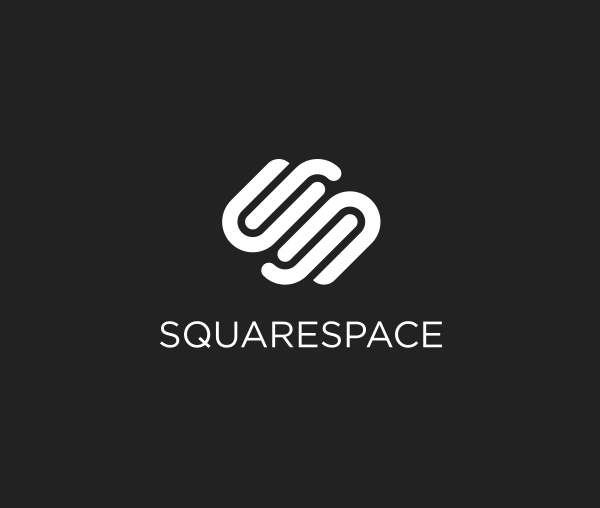Canon T5i vs 60D vs 70D
/How does the Canon T5i stack up against the 60D and 70D?
Pros of the 60D and 70D bodies
- Top LCD screen and slightly more accessible button layout for quickly adjusting settings
- Bigger slightly more robust body
- Slightly Faster FPS with a little larger buffer, longer burst shooting
- Faster Max shutter speed at 1/80000 of a second
- Pentaprism viewfinder = brighter/larger
- Longer battery life
Additionally the 70D offers (70D Pros)
- A newly designed sensor - 22MP and better low light capabilities.
- Camcorder like auto focus when used with any Canon lens - Silent AF during video if using 18-55 STM or 18-135 STM lens
- WiFI for streaming live view or sharing images to smartphone/tablet
- Micro focus adjustment - pro level feature that lets you align lenses and cameras for maximum sharpness
- Multiple compression levels for H.264 video
- Touchscreen
Canon T5i Pros-Over the 60D
- Continuous Auto focus during video (silent when paired with new STM lenses 40mm or 18-135)
- On board Stereo Mic
- Newer Digic Processor = higher ISO capabilities & in camera HDR
- Touch screen
- Smaller - more easily portable
-Over the 70D
- Smaller - more easily portable
- Cheaper with 18-55 STM or 18-135 STM lens
 |
70D Pro
Price- Body Only $1199 | with 18-55 Lens | with 18-135 Lens $1549 |
 |
60D Pro
Price- Body Only $599 | with 18-135 Lens |
 |
T5i Pro
|
The 60D has been out for almost four years, announced August 2010. The 70D began shipping at the beginning of September 2013. The T5i and 60D share the same sensor. At low ISOs the image quality and noise levels should be virtually identical. The 70D has a new 22MP sensor with improved low light capabilities. All cameras have articulated LCD screens of the same size but the T5i and 70D have touchscreens with the 70D being slightly improved, very little real world difference there. Looking through the viewfinder the 60D/70D has pentaprism which means a brighter viewfinder, The 60D/70D also uses the larger LP-E6 batteries which effectively doubles battery life, 60D/70D gets nearly 1100 shots per battery, the T5i is around 500. You also get higher FPS and shutter speed with the 60D/70D, 6fps/7fps and 1/8000 second versus 5.3 with the T5i and a larger buffer on the 60D/70D gives you a few more shots at those higher speeds. 60D/70D is a bit bigger and a bit more rugged with a top LCD screen. The 70D allows for micro focus adjustment - a pro level feature that lets you align lenses and cameras for maximum sharpness. 70D also has new dual pixel focus for camcorder like focus with any canon lens during video. Silent focus if you use one of the STM lenses. 70D also has Wifi for connecting to live view via smartphone or tablet and accessing images for sharing.Summary - If you are getting paid to shoot you should consider the 60D or 70D, longer battery life, slightly more ergonomic design and button layout plus the top screen LCD allow you to shoot more efficiently. The 70D is expensive but provides some of the best crop sensor images possible at this time and if you want camcorder like focus with the quality of a DSLR there is no better option than the 70D. If you are a parent or amateur the smaller size of the T5i is a bonus, best camera is the one you will have with you most of the time and the STM lenses paired with the T5i do a decent job of auto focusing, just not quite as good as the new 70D.

 on Amazon.
on Amazon. T5i (700D)
T5i (700D) T4i (650D)
T4i (650D) Canon T3i(600D)
Canon T3i(600D) Nikon D5200
Nikon D5200 Nikon D3200
Nikon D3200
 Released in 2008, the 50D was placed solidly above the Rebel line, it offered a camera with magnesium body (think pretty tough) and professional features like Micro-AF adjust (not all lenses focus perfectly with all bodies, Micro AF allows you to tweak the alignment to get better results for each lens) and a fast burst rate with large buffer. Two years to the day later the 60D was announced and was seen by many as a departure from the prosumer line and a blurring with the Rebel line. The 60D was slightly smaller, lost the magnesium body and the Micro AF adjustment. It did gain video recording features and the articulated screen. With the feature set of the T4i it is likely that the 70D will return the XXD line to a more professional level. This will increase the price with a kit costing somewhere in the neighborhood of $1500. This also puts it on par with Nikon's recently released and excellent D7100. If you follow all of the different Canon lines you may wonder where that leaves the 7Ds replacement, the rumor there is that the 7D Mark II will come in at much higher level too, close to $2000 and offering a high-end focus system and burst rate that is needed by sports and wildlife photographers.
Released in 2008, the 50D was placed solidly above the Rebel line, it offered a camera with magnesium body (think pretty tough) and professional features like Micro-AF adjust (not all lenses focus perfectly with all bodies, Micro AF allows you to tweak the alignment to get better results for each lens) and a fast burst rate with large buffer. Two years to the day later the 60D was announced and was seen by many as a departure from the prosumer line and a blurring with the Rebel line. The 60D was slightly smaller, lost the magnesium body and the Micro AF adjustment. It did gain video recording features and the articulated screen. With the feature set of the T4i it is likely that the 70D will return the XXD line to a more professional level. This will increase the price with a kit costing somewhere in the neighborhood of $1500. This also puts it on par with Nikon's recently released and excellent D7100. If you follow all of the different Canon lines you may wonder where that leaves the 7Ds replacement, the rumor there is that the 7D Mark II will come in at much higher level too, close to $2000 and offering a high-end focus system and burst rate that is needed by sports and wildlife photographers.  Back to the idea of a smaller T4i- eh. Traditionally Canon has offered a dumbed down rebel and budget friendly rebel that uses a similar form factor with cheaper sensor and missing a few features. This sounds like the opposite - a smaller camera with the current T4i guts crammed inside. I don't know how this will fit in the pricing scheme but Canon is certainly feeling pressure from the mirrorless and Micro 4/3 systems otherwise they wouldn't have rushed the EOS-M out the door with admittedly slower AF. The smaller rebel rumor isn't very exciting unless it comes with a new feature or two and knowing these companies desire to extract every penny from our wallets those features will only appear in the second version. Someone left a comment on one of my videos "If only Canon and Nikon would combine we would have one Awesome camera" Noooo this is exactly what we do not want. Competition is good and I am pretty convinced now that the price of the T4i really dropped over the last months to get a solid install base before the D5200 was released though the Nikon still doesn't seem to be selling well and probably won't until it sees a price drop too. I'd love to hear your thoughts?
Back to the idea of a smaller T4i- eh. Traditionally Canon has offered a dumbed down rebel and budget friendly rebel that uses a similar form factor with cheaper sensor and missing a few features. This sounds like the opposite - a smaller camera with the current T4i guts crammed inside. I don't know how this will fit in the pricing scheme but Canon is certainly feeling pressure from the mirrorless and Micro 4/3 systems otherwise they wouldn't have rushed the EOS-M out the door with admittedly slower AF. The smaller rebel rumor isn't very exciting unless it comes with a new feature or two and knowing these companies desire to extract every penny from our wallets those features will only appear in the second version. Someone left a comment on one of my videos "If only Canon and Nikon would combine we would have one Awesome camera" Noooo this is exactly what we do not want. Competition is good and I am pretty convinced now that the price of the T4i really dropped over the last months to get a solid install base before the D5200 was released though the Nikon still doesn't seem to be selling well and probably won't until it sees a price drop too. I'd love to hear your thoughts?
 (
( Next Steps - Price out lens packages for general use. What does Nikon offer for general walk around, good zooms for wildlife, portraits, street, primes, macros etc. External Flash options - Articles/Videos are coming along with "What would be your cost of owning"
Next Steps - Price out lens packages for general use. What does Nikon offer for general walk around, good zooms for wildlife, portraits, street, primes, macros etc. External Flash options - Articles/Videos are coming along with "What would be your cost of owning" 


